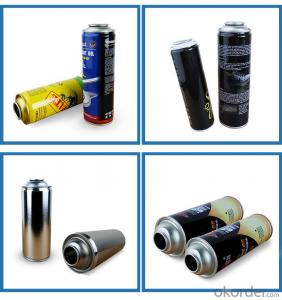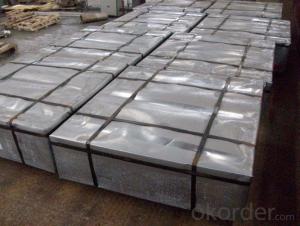Folha de folha de flandres para uso em latas de aerossol
- Loading Port:
- China main port
- Payment Terms:
- TT OR LC
- Min Order Qty:
- 25 m.t.
- Supply Capability:
- 2000 m.t./month
OKorder Service Pledge
OKorder Financial Service
You Might Also Like
Item specifice
Descrição do Produto:
1. Principais características
Folha de folha de flandres de primeira qualidade para fazer Cansis um dos materiais de embalagem de metal, que é amplamente usado para fazer latas de pintura, latas de embalagens químicas, cabos elétricos, bateria e impressão de metal, etc.
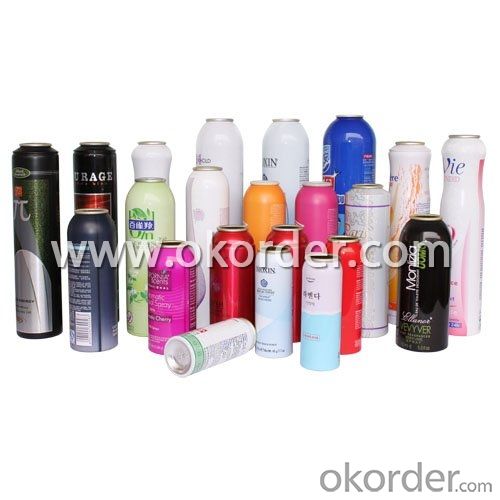
2. Vantagens
a). Estável e de alta qualidade
b). Rápido de entrega
c). Rica experiência e boa reputação de trabalho de exportação
4). Para a superfície, chapa de espessura uniforme, revestimento de estanho uniforme e liso, sem defeitos, ferrugem, arranhões, ondas, corte de revestimento de estanho etc.
5). O preço competitivo do mercado
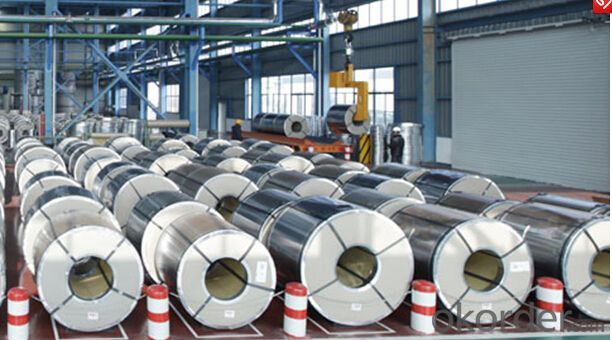
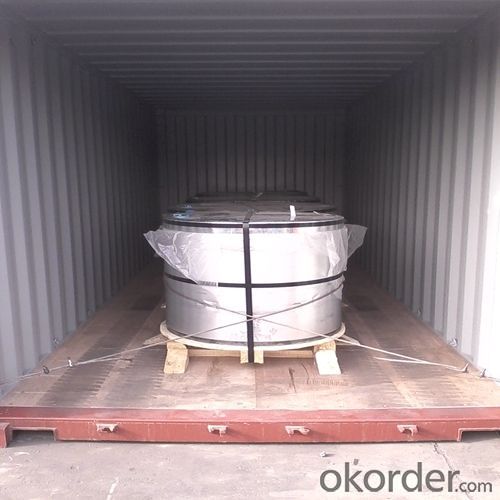
3. Especificações
Padrão : GB2520-2000 ,JIS G3303
Tipo : SPCC
Revestimento : 2.8/2.8
Acabamento de superfície: Bright, Stone ,
Espetura:0.31mm,etc.
Largura :600MM~1000MM
Temper : T1~T5
Embalagem: folha-de-flandres envolvida totalmente com capa interna de plástico ou papéis impermeáveis com cantos protegidos com anjos de metal.

4.Perguntas frequentes sobre folha de flandres
Como posso comprar os produtos no meu país?
Envie-nos uma pergunta ou e-mail, responderemos se houver distribuidor em seu país.
Quanto tempo leva para receber o produto se eu fizer um pedido?
Com o processo de suas necessidades, embalaremos e entregaremos em 3-7 dias. Se for por transporte marítimo, levará 15-40 dias dependendo dos diferentes locais.
Como fazer o pagamento?
Em primeiro lugar, envie-nos uma consulta e responderemos o seu orçamento, se o nosso preço lhe for adequado, prepararemos a fatura pró-forma com os nossos dados bancários.
- Q:Does tinplate corrode over time?
- Yes, tinplate can corrode over time due to exposure to moisture, oxygen, and other corrosive elements. However, the corrosion rate of tinplate is relatively slow compared to other metals, thanks to the protective layer of tin that covers the steel base. Regular maintenance and proper storage conditions can help slow down the corrosion process.
- Q:What are the common challenges in processing tinplate?
- Some common challenges in processing tinplate include ensuring proper coating adhesion, preventing tinplate corrosion, managing the formation of tin whiskers, and achieving consistent thickness and flatness in the tinplate sheets. Other challenges may include controlling the tinplate's surface quality, preventing contamination during processing, and ensuring proper handling and storage to avoid damage.
- Q:What are the disadvantages of using tinplate in packaging?
- One of the disadvantages of using tinplate in packaging is its susceptibility to corrosion. Tinplate can rust when exposed to moisture and other corrosive elements, which can compromise the integrity of the packaging and potentially contaminate the product. Additionally, tinplate is relatively heavy compared to other packaging materials, which can increase transportation costs and carbon footprint. Lastly, tinplate is not as malleable as other materials, limiting its versatility in certain packaging designs.
- Q:How does tinplate contribute to the shelf life of beverages?
- Tinplate contributes to the shelf life of beverages by providing a protective barrier that prevents contact between the beverage and its container. This barrier helps to prevent oxidation, contamination, and the transfer of flavors, ensuring the beverage stays fresh and retains its quality for a longer period of time. Additionally, tinplate containers are resistant to corrosion, maintaining the integrity of the packaging and further extending the shelf life of the beverages.
- Q:How is tinplate recycled?
- Tinplate is recycled through a process known as steel scrap recycling. First, the tinplate is collected and sorted. Then, it undergoes a shredding and melting process to separate the steel from other materials. The melted steel is purified and refined, removing any impurities. Finally, the purified steel is used to produce new tinplate products, completing the recycling cycle.
- Q:What are the different types of tinplate closures available?
- There are several types of tinplate closures available, including twist-off caps, lug caps, pry-off caps, and crown caps.
- Q:How is tinplate used in the cosmetics industry?
- Tinplate is commonly used in the cosmetics industry for packaging purposes. It is used to create metal containers, such as tin cans or tubes, that house various cosmetic products like creams, lotions, or powders. Tinplate's durability and resistance to corrosion make it an ideal material for ensuring the safety and longevity of cosmetic products. Additionally, its attractive appearance allows for branding and customization options, enhancing the overall appeal of the product.
- Q:What is the difference between tinplate and tin-free steel?
- Tinplate is a thin steel sheet coated with a layer of tin, whereas tin-free steel is a steel sheet that does not have a tin coating. The main difference lies in their corrosion resistance properties, where tinplate offers better protection against rust due to the tin layer, while tin-free steel relies on other coatings or treatments to prevent corrosion.
- Q:How does tinplate contribute to the circular economy in the steel industry?
- Tinplate plays a significant role in promoting the circular economy within the steel industry. Due to its exceptional recyclability, tinplate can be easily collected, sorted, and recycled into new products repeatedly without losing its properties. This allows for a closed-loop system where tinplate packaging is collected, recycled, and reintroduced into the market as new packaging, reducing the need for virgin materials and minimizing waste generation. By facilitating the reuse and recycling of tinplate, the steel industry can minimize resource depletion, reduce energy consumption, and decrease the environmental impact associated with production.
- Q:What about tin cans?
- In the galvanic cells of the tin, iron is negative and oxidized because iron is more active than tinTherefore, in the coating damage after corrosion. Than tin tin
1. Manufacturer Overview |
|
|---|---|
| Location | |
| Year Established | |
| Annual Output Value | |
| Main Markets | |
| Company Certifications | |
2. Manufacturer Certificates |
|
|---|---|
| a) Certification Name | |
| Range | |
| Reference | |
| Validity Period | |
3. Manufacturer Capability |
|
|---|---|
| a)Trade Capacity | |
| Nearest Port | |
| Export Percentage | |
| No.of Employees in Trade Department | |
| Language Spoken: | |
| b)Factory Information | |
| Factory Size: | |
| No. of Production Lines | |
| Contract Manufacturing | |
| Product Price Range | |
Send your message to us
Folha de folha de flandres para uso em latas de aerossol
- Loading Port:
- China main port
- Payment Terms:
- TT OR LC
- Min Order Qty:
- 25 m.t.
- Supply Capability:
- 2000 m.t./month
OKorder Service Pledge
OKorder Financial Service
Similar products
New products
Hot products
Hot Searches
Related keywords

